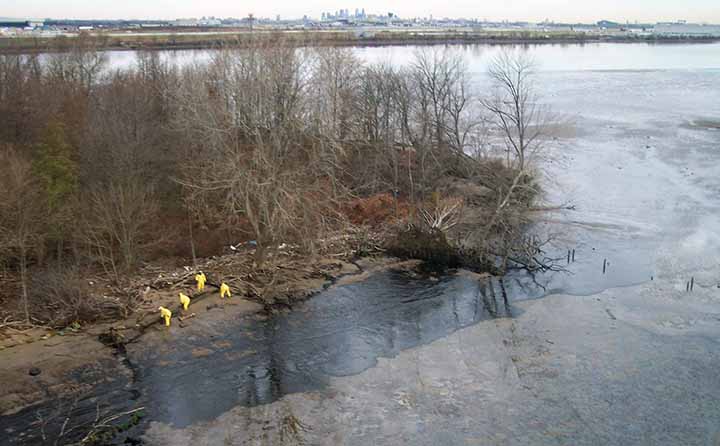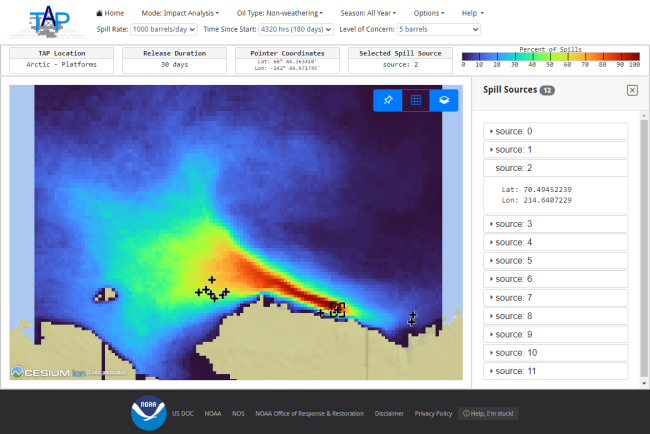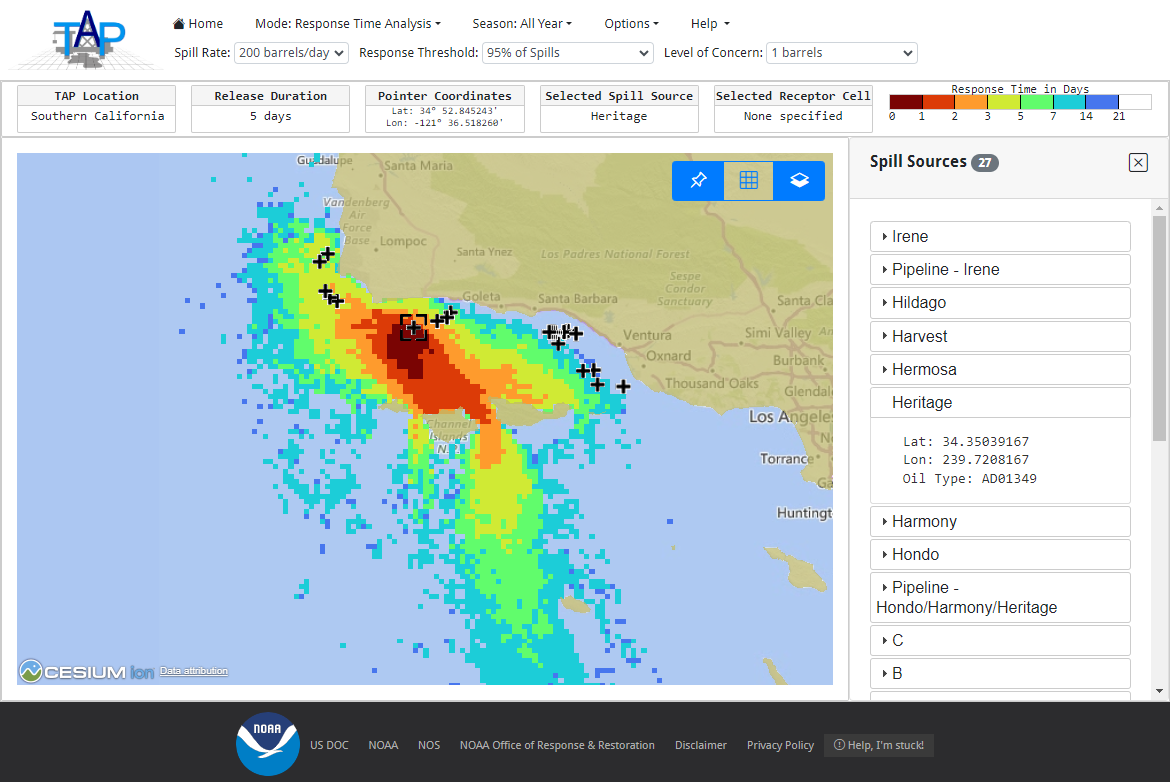To prepare for possible oil spills from likely sources, oil spill modelers in NOAA’s Office of Response and Restoration (OR&R) developed the Trajectory Analysis Planner (TAP), a software tool that provides a statistical view of where oil is likely to go in the event of a spill. TAP analyzes thousands of simulated oil spill trajectories generated by NOAA’s oil spill trajectory model, GNOME (General NOAA Operational Modeling Environment), driven by varying winds and ocean currents. The resulting statistics, which identify locations more likely to be impacted by a spill, improve decision-making during planning and preparedness to prevent or minimize harm from oil spills in that region.
Initially created as a desktop application, TAP is now available as a web application, WebTAP. Through work funded by the Bureau of Ocean Energy Management, this online version of TAP makes the tool more flexible, and easier for planners and responders to access and view results.
OR&R and its partners are planning further development of TAP, leveraging some of OR&R’s existing capabilities to inform planning and preparedness activities to better support the U.S. Coast Guard (USCG) and other response agencies in the Great Lakes region. These efforts are an outcome of a Stakeholder Workshop hosted by the USCG Great Lakes Oil Spill Center of Expertise in fall 2022.
To enhance collaboration and communication on environmental and spill modeling efforts in the Great Lakes region, OR&R oil spill modelers became engaged with regional modelers at the Great Lakes centered institutions through a working group, facilitated by the Coastal Response Research Center at the University of New Hampshire. OR&R also proposed to conduct a Great Lakes Risk Analysis, leveraging some of the office’s existing capabilities to inform planning and preparedness activities to better support the USCG in the region.
The overarching project goal in the Great Lakes is to conduct an analysis of shorelines and associated flora and fauna at greatest risk from an oil spill. “Risk” in this context is a function of the probability of a particular shoreline being oiled from a release from a given location, combined with the sensitivity of the shorelines and/or its associated flora and fauna to oiling.

TAP can be used with another important OR&R tool—Environmental Sensitivity Index (ESI) datasets—to investigate this risk. The ESI datasets provide a concise summary of coastal resources at risk from an incident (e.g., oil spill, storm event) in a given geographical area. Examples of at-risk resources include biological resources, vulnerable shorelines, and human-use resources (e.g., parks, beaches, historical sites).
This project will utilize two recent advances in the region:
- A new, coupled ocean-ice model for the Great Lakes that is run in near real-time at NOAA’s Great Lakes Environmental Research Laboratory, and operationally at NOAA’s National Ocean Service under the name Great Lakes Operational Forecast System.
- The newly updated ESI dataset for Lake Erie, with updates to the remaining Great Lakes ESI datasets (Ontario, Michigan, Huron, Superior) to be complete by 2026.
The WebTAP system provides an interactive environment to explore the probability of specific regions being impacted by potential spills. In order to overlay these results with ESI and other geo-referenced datasets, additional development work needs to be performed so that the results from TAP can be exported in a format suitable for use within NOAA’s online mapping tool ERMA® (Environmental Response Management Application) and other GIS systems for further analysis.
This effort will comprise a multi-year project. Year one work will focus on the development of the TAP analysis for Lake Erie, including further development of WebTAP to output results in formats compatible with ERMA. In year two, OR&R plans to integrate the TAP runs with the ESI datasets to highlight areas most at risk.
The methodology and enhancements developed in the first two years of the project should dramatically streamline the effort involved for subsequent work. This Great Lakes TAP-ESI risk assessment approach could be scaled for a nationwide approach to risk quantification, helping to prepare and enable responders to protect ocean and coastal resources from the impacts of oil spills and other hazards.


